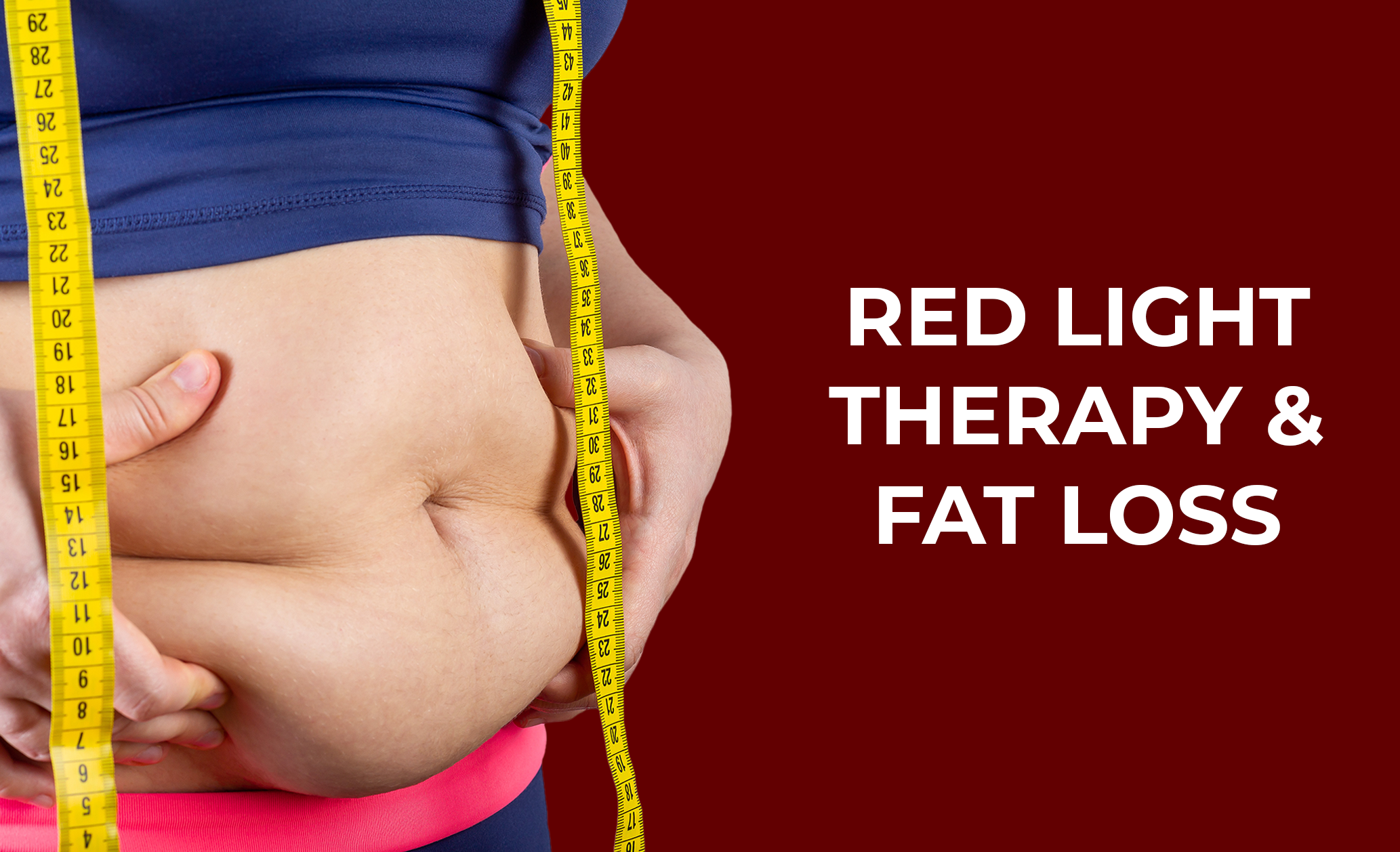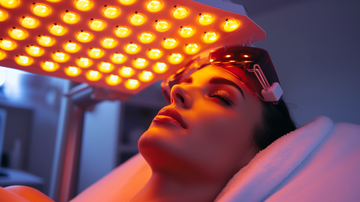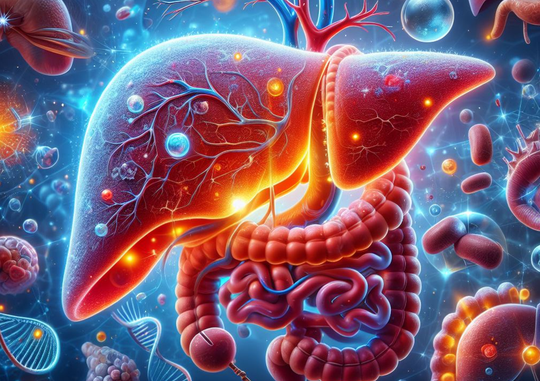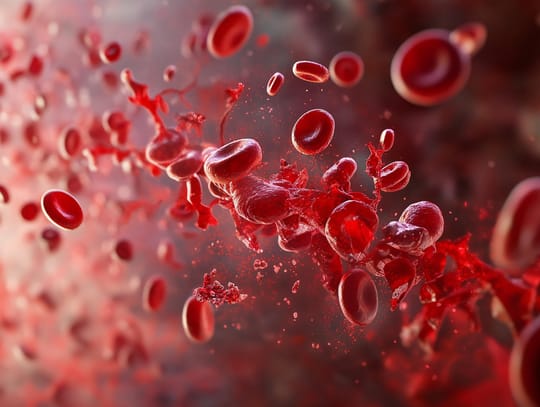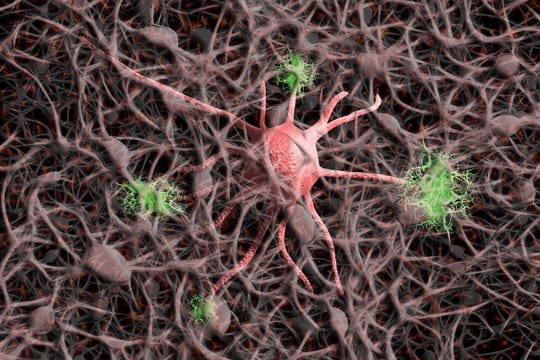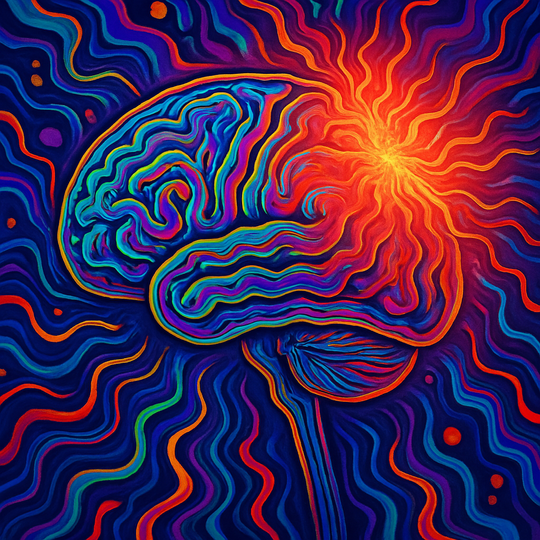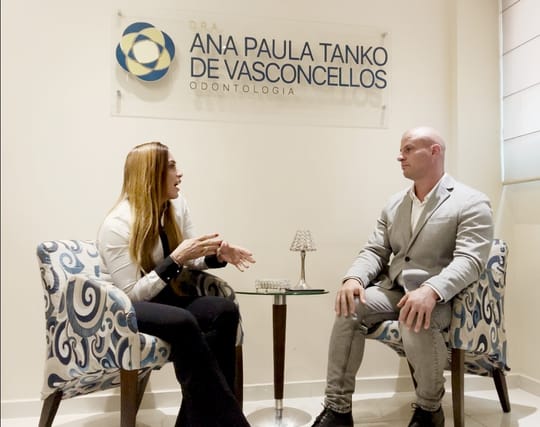So in this blog post I want to talk about red light therapy for weight loss. I'll go over the available studies and break them down in great detail. I'll also cover an example of an online resource that has been posted on this topic and break down why people often misunderstand the implications of these studies.
The primary fat loss mechanism is through enhancing cellular metabolism and energy production, which helps reduce fat without destroying fat cells. This is achieved by stimulating the mitochondria within cells to produce more adenosine triphosphate (ATP), the energy currency of the cell, thereby boosting overall metabolic activity.
As a result, studies have shown that red light therapy can lead to a measurable reduction in waist circumference and overall body fat when used in conjunction with exercise (or better yet: a caloric deficit). The therapy is believed to work by increasing the permeability of fat cell membranes, facilitating the release of triglycerides, which are then metabolized by the body. Additionally, red light therapy may help reduce systemic inflammation, which is often associated with obesity and metabolic disorders.
Despite these promising findings, not all studies are positive. Results can vary due to differences in study design, including variations in the wavelength and intensity of the light used, duration of exposure, and treatment protocols. So you don't have guaranteed results. I recommend using high-powered red light therapy panels that emit multiple wavelengths to achieve optimal results.
I also recommend to not exclusively rely on red light therapy. Instead, red light should be part of a broader weight loss regimen, including a balanced diet and regular physical activity - if you want the best outcome.
Also, if you want a video version of this blog post summary, check:
Ready?
Here we go...
Does Red Light Therapy Work For Weight Loss? Studies Breakdown
So how effective is red light therapy for weight loss? In this section I'll break down all of the scientific studies on whether red light therapy works for weight loss. First of all, there's this extremely important question that has been asked many times:
Does Red Light Therapy Create Localized Fat Loss?
So recently tons of people have been asking whether red light therapy causes localized fat loss. Specifically, there have been comments of people of red light therapy causing them, allegedly, to lose fat in their faces.
But for other reasons too, many people want to know whether red light therapy works for localized fat loss - abdominal fat being one of them. One study included 40 healthy adult women and men under 65 years old (2).
These study participants had their waistlines treated for 30 minutes a day, twice a week. The wavelengths that were used were 635-680nm. That wavelength range is quite common and similar to what you would be getting with many consumer products such as LED panels.
Now here's the kicker: each treatment gave a whopping reduction of 0.4-0.5 centimeters of fat loss around the waist. The researchers gave a bit of contradictory evidence later on in the paper, saying that participants lost 2.15 centimeters in total.
But the statistical analysis that the researchers applied was a bit weird, by only including people whose weight fluctuated more than 1.5 kilograms during the analysis. Nevertheless, red light therapy for fat loss works extremely well, it seems! You can almost lose an inch over a 1 month period.
The study participants received these eight treatments in total over a period of four weeks. Researchers also took pictures to check the cosmetic effects. During that process they were blinded (so they didn't know which pictures were from the control group or intervention group). And, the pictures of the intervention group were rated to look cosmetically better after four weeks.
The researchers also considered some of the mechanisms by which the fat loss was achieved (3). Laboratory studies (in vitro) conclude that the light therapy doesn't directly kill fat cells. The researchers also describe other processes that underlie fat loss, such as:
"The number of viable cells in the laser-treated or untreated group as determined by the propidium iodide assay were similar, but calcein levels were lower in the laser-treated cells [...]. Calcein, a non-fluorescent dye, gets transported through the cell membrane, becomes fluorescent due to cleavage with cellular esterases, and gets trapped intracellularly. Normally functioning cells can extrude the entrapped dye. Considering the equal cell viability in the two groups, lower calcein levels in the laser-treated group suggests either intact metabolic functioning of cells and/or reduction of cell-trapped calcein, perhaps by leakage." (3).
In plain English, this statement means that fat is emitted from the cells that is then burned.
Also, one important thing to note is that the study participants weren't obese - if you're overweight or obese it's generally easier to lose weight early on in the process. So, overweight or obese people could expect even greater improvements than what was described in this study.
Next up, a study with obese participants - where red light therapy was compared to radio frequencies to the stomach area (4). The red light therapy group had superior results here.
A 635nm laser was applied in this study. The dose ~ was 4 J/cm2 per session, which is really low and normally not perfect for deep tissue treatment. In total, twelve 20-minute treatments were applied.
The waist to hip ratio improved significantly in the red light therapy group. However, intra-abdominal fat thickness and the subcutaneous-abdominal fat thickness, which are different measures of body fat, didn't improve. Overall though, this is yet another win - even though imperfect dosing was applied!
Overall though, the jury is still out on red light therapy for local fat loss.
Let's now look at another situation:
Red Light Therapy For Systemic Fat Loss (Whole Body)
Let's consider combining red light therapy with other strategies for fat loss, as well as the topic of systemic (so non-local) fat loss. I'll start with the first topic first. Fortunately, a review that integrates previous research investigated this topic. Here's what the authors write (1):
"A total of 15 articles were critically analyzed. The wavelength used ranged from 532 nm (green) to 956 nm (near infrared), and many authors failed to describe dosimetric parameters properly, as well as other important characteristics for the reproducibility of those found. Although it is not fully clear about the [photobiomodulation (PBM)] interference level on the lipid profile, in general, there was no significant difference in lipid parameters when PBM was used alone, and when associated with techniques that promote beta-oxidation, there was an improvement in these biochemical variables."
Beta oxidation here means fat loss. And the lipid profile are your blood parameters linked to your cardiovascular disease and diabetes risk. What's weird here is that the authors conclude that it doesn't matter for your lipid profile whether you use red light therapy alone or combined with exercise.
You'll get results anyway for not only fat loss but also other health parameters such as your lipid profile. So indirectly the promotion of fat loss and improvements of the lipid profile should have benefits for reducing your risk of heart disease and diabetes.
Also, other studies show that red light therapy does combine well with exercise and that fat loss is increased (5). Here's the setup of that study:
"Seventy-seven healthy volunteers completed the treadmill-training protocol performed for 12 weeks, with 3 sessions per week. PBMT was performed before and/or after each training session (17 sites on each lower limb, using a cluster of 12 diodes: 4 × 905 nm super-pulsed laser diodes, 4 × 875 nm infrared LEDs, and 4 × 640 nm red LEDs, dose of 30 J per site). Volunteers were randomized in four groups according to the treatment they would receive before and after each training session: PBMT before + PBMT after, PBMT before + placebo after, placebo before + PBMT after, and placebo before + placebo after. Assessments were performed before the start of the protocol and after 4, 8, and 12 weeks of training." (5).
So once again, it's a combination of wavelengths, 640nm, 875nm, and 905nm light in this case, which aren't commonly used in red light therapy panels. Using red light therapy before and after sessions led to the best results in this study for body fat losses.
Exercise performance and oxygen uptake also increased in this group, which are a nice bonus because then you can train harder and subsequently lose even more body fat! The VO2 max and time to exhaustion improved about double in the group that received red light therapy before and after a workout than in the other groups
Also, the red light therapy before and after workout lost about double the body fat of the groups that only had red light therapy before or after a workout. And the latter two groups lost about double the body fat of the pure placebo groups.
Next up, there's one more super interesting study where obese women lost about double the body weight by combining exercise and light therapy compared to light therapy alone (6).
The researchers describe the treatment protocol in the following way:
"The application of Phototherapy by Continuous Laser waves (808 nm) occurs always at the end of the training session. Thus, in each week, the patients received three sessions of phototherapy. The emitters were arranged perpendicularly to the skin and were allocated in the anterior region: abdominal and quadriceps simultaneously during 8 minutes. After this, change the position to irradiate the posterior region: gluteus and biceps femoral during 8 minutes, totalizing 16 minutes" (7).
So, only the trunk area and below were treated, in both the front and the backside. Exercise consisted of 30 minutes of aerobic exercise and 30 minutes of resistance training. The women receiving the 808nm light therapy lost on average 11.2 kilograms of bodyweight (24.6 pounds) while the women not receiving light therapy lost 5.8 kilograms (12.8 pounds). So the difference here is massive.
Also, the insulin resistance measured with the HOMA-IR index declined by 38 points in the light therapy group while that number is only 21 points in the placebo group. So here too, the difference is almost two-fold again. And, the light therapy group gained muscle mass (.6 kilogram) while the other group lost it (lost 1.4 kilogram).
So for fat loss and overall health, especially long term, this study shows that 808nm light can be extremely helpful.
Other studies exist as well here, such as on using different dosing protocols for promoting fat loss. In one study, a two times per week approach was better than one or three times per week (8).
That group lost 1 kilogram (2.2 pounds) of weight and 2 inches across the midsection (the latter is huge and implied that muscle gains were made!). That result occured after just six weeks.
The study used an Erchonia® Zerona™ 2.0 Laser. But here's the deal: different areas of the body were treated with 532nm green light. So it's not even red light therapy in this case.
Which brings me to my next question.
Is Red Light Therapy For Weight Loss Safe?
Red light therapy for weight loss is safe, yes, generally. Exceptions always exist - for instance some people might incorrectly dose their sessions. And, generally red light therapy for fat loss is so safe that it improves your general health and should lower your overall disease risk.
Red Light Therapy For Weight Loss Reviews: Your Best Options
Well, it seems like the studies I've described above all use different wavelengths. So the answer isn't easy here. One study uses 635-680nm light, the other only 635nm light, one more uses 808nm light, and yet another a combination of wavelengths of 640nm, 875nm, and 905nm. Even 532nm green light seems to help.
Also, there are no good comparisons right now that describe the power output well and the J/cm2 that's used in most studies. So right now, the best red light therapy for weight loss products remains guesswork.
Your best option based on the science is arguably a higher-powered panel with a wider spectrum of different wavelengths, including the 630nm and 660nm light. Those two red wavelengths will give you access to a wide spectrum or light in the red range. The infrared wavelengths used in the studies are currently not used in any red light therapy products, except for my beloved 808nm light.
So what do I recommend? Simply getting a higher-powered setup from our shopping tool and filtering on your location for warehouses (to reduce import taxes), and choosing multiple wavelengths such as 630nm, 660nm, and 810nm.
Bigger setups are probably better although more research is needed. And, in terms of research, there are the following limitations:
- No full-body studies have been carried out. So all of the studies above only use spot treatment and don't hit all areas of the body. I probably suspect that you'd get better results with full body treatment, which is almost always the case. Some of the studies with the best results have been carried out with the NovoTHOR for instance.
- No longer-term studies have been carried out. I'd probably expect results to get better over time, especially combined with exercise because of the quicker recovery. And, in many of these studies the results don't level off but get better in time, so if there would be a 12-month study or 24-month study that would be really informative.
- We don't know what wavelengths are best. There has been no comparison between wavelengths in the same study. We also don't know much about the combinations of wavelengths for fat loss, for instance, is a combination of 532nm and 635nm better than 635nm alone?
- We're not sure about power output. Some of the studies - if the J/cm2 is mentioned at all - don't describe the power output well or use very low power output.
Nevertheless, my conclusion is that red light therapy for fat loss certainly helps big time. And also, it's best combined with exercise therapy, which is among the gold standard for helping people to lose fat, because the red light therapy helps recovery there too and magnifies your gains. Check this video by Alex about its combination:
That video teaches you how to optimize your red light therapy for athletic performance. Lastly, again, for the best fat loss results I recommend grabbing a higher-powered setup from our shopping tool.
Red Light Therapy For Weight Loss At Home
Many people ask me like "what is the best red light therapy belt for weight loss?" These people have seen commercials about red light therapy products that promise a big gain in fat loss.
Or, for instance, they ask about red light therapy pads for weight loss. So here's the deal:
Light is light.
Light doesn't become different because you're using a pad or a belt. Yes, theoretically the dynamics change because you're applying the light directly to your skin.
(This is a very complex discussion in the red light therapy science that scientists don't even agree on!)
But overall your best bet is a simple red light therapy panel. And, if you want to apply the light directly against your skin, as with a red light therapy pad or belt, you can do so as well with a red light therapy panel.
So right now I don't see any benefit to not using a red light therapy panel, except maybe that you don't spend any time using a pad or a belt. So for that reason I recommend checking out the Mito Red Belt Review that Alex Fergus did on YouTube.
Also, lastly, I want to venture into some arguments I found online in the last year or two that are highly misleading on red light therapy and fat loss:
Beware: Red Light Therapy For Fat Loss Works Extremely Well But Some Online Sources Say Otherwise!
So, the bottom line is this: there's plenty of evidence that red light therapy works for fat loss. And, we're not talking about a tiny effect either, the results you can get in a short period of time such as two or four weeks is excellent.
Also, the fact that these studies aren't perfect doesn't mean that you can completely ignore the outcomes of these studies. These studies all show an effect and all point in the same direction. There's no study among the ones I cited that doesn't show a good result.
What's really weird is that some online sources are misleading people about the results that you can expect (9). This Women's Health Mag starts by misleading (either intentionally or unintentionally) in the very title, by saying that "it's not a replacement for other healthy habits" (9) Of course red light therapy is no replacement, but nobody in the industry is claiming that in the first place!
For instance, here are some very misleading claims:
"But there are at-home devices (including wearable "belts") on the market as well. There’s just really no good data to support their use for weight loss either."
And:
"Research into red light therapy is ongoing and there isn’t a ton to go on with how, exactly, this works."
And:
"Since red light therapy doesn’t have any of these large studies for weight loss, it’s really tricky to draw any major conclusions about whether it actually works."
And:
"Despite the growing popularity and optimism that red light therapy can help with weight loss, it is unlikely that it will provide any significant benefits," Dr. Zeichner says."
My response here is that:
- We know that at home devices give people excellent benefits. So claiming that belts don't work, even though they often have extremely similar parameters, is misleading.
- Research into red light therapy is "ongoing", yes, but contrary to the claim listed above we do know how it works generally, although the specifics of physiology are extremely complex. All the studies I cited (which are more studies than listed in the Women's Health Mag article, show that red light therapy works for fat loss. Yes, studies are imperfect but the therapy works, according to what's published right now, and can even double your fat loss results from exercise.
- And, lastly, yes, even without having "large studies for weight loss", which are extremely expensive, we do know on the basis of the limited studies that red light therapy for fat loss works. If larger studies are carried out and they contradict the current research, you can claim that it doesn't work, but based upon the best evidence we have now, red light therapy stimulates fat loss for sure.
- Lastly, the quote by Dr. Zeichner listed above is just plainly ignorant or evil or a combination of the two. Again and again, like I say, the imperfect studies that exist right now show very significant benefit, extremely significant even, because they are paired with general health improvements, such as a better lipid profile and less insulin resistance.
So far my rant! Let's now conclude:
Conclusion: You Can't Always Get What You Want - But You Might Get What You Need!
Well, I can't always get what I want. Because I want tons of high-quality human studies with great methodology and many participants. But, what I do get what I need: sufficient evidence that red light therapy for weight loss massively pays off!
Items Mentioned:
- Mito Red Belt - code ALEX5 saves
- Light Therapy Insiders Shopping Tool - here you can find the best panels for overall health and therefore fat loss.
- Best Panels Of 2023 - these are Alex's favorite panels from 2023.
- The Best Red Light Therapy Panel 2024 - If fat loss is your goal, I recommend getting one of the top-ranking panels. Any top-ranking panel will do!
This is a post by Bart Wolbers. Bart finished degrees in Physical Therapy (B), Philosophy (BA and MA), Philosophy of Science and Technology (MS - with distinction), and Clinical Health Science (MS), has had training in functional medicine, and is currently chief science writer at Lighttherapyinsiders.com

